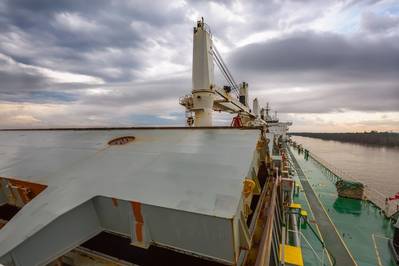Asian Crop Importers Brace for Delays After Ida Hits US Export Hub
Asia’s grain and oilseed buyers are set to face shipping delays of at least one month after Hurricane Ida damaged key export terminals around the U.S. Gulf Coast, two traders and one miller said. The slowdown in supplies is likely to stoke food inflation fears for price-sensitive consumers in Asia, where many importers have already drawn down crop inventories after having been forced to curb purchases amid volatile crop prices and COVID-related supply disruptions this year.
Importers led by top soybean buyer China, major corn buyer Japan and number two wheat importer Indonesia are likely to take a hit after top exporters such as Cargill suffered damage to grain-loading facilities.
“We have trading companies asking us to roll over shipping contracts from September to October, as it will take at least one month to get things back to near normal,” said one trading manager at an international company which runs soybean and wheat processing plants across Asia.
“There is also talk of cancellations.”
The sources declined to be identified because they weren’t authorized to speak to the media.
Hurricane Ida which roared ashore last week caused damage to export facilities with more suppliers reporting losses.
Crop exports from Gulf coast terminals in southern Louisiana - which handle roughly 60% of U.S. crop shipments - remained severely limited on Tuesday, even after the U.S. Coast Guard reopened the lower Mississippi River to shipping traffic over the weekend.
Drop off
The damaged infrastructure is already having an effect on export volumes.
U.S. exporters inspected just 68,059 tonnes of soybeans for shipment in the week ended Sept. 2, down 82% from a week earlier and 96% less than the year-ago period. Corn exports of 275,799 tonnes were 53% lower than the week prior and 69% below the same week a year ago, according to the U.S. Department of Agriculture (USDA).
“Buyers will have to wait or seek alternative sources if suppliers declare Force Majeure,” said a Singapore-based feed grains trader, referring to a common clause in contracts which frees both parties from liability or obligation when an event beyond their control takes place.
Asia is by far the top market for the U.S. soybean crop which is approaching harvest, and importers typically conduct a majority of their purchases soon after harvest when supplies are abundant and prices tend to come under pressure.
Between 2016 and 2020, Asia accounted for around 71% of total U.S. soybean exports, 56% of which were shipped to Asian buyers between September and December of those years, according to USDA data.
Some crops are expected to be rerouted to Pacific Northwest ports to try to maintain flows, though “this is likely to result in congestion at the PNW ports, which will impact wheat exports as well,” a second Singapore-based trader said.
Any lengthy delays in restoring U.S. export loadings will have a direct impact on top buyer China, where soy processing margins have recently recovered from a plunge in June tied to worries about demand from the country’s hog sector.
“It is possible that we might have problems with supplies due to various factors including the impact from the hurricane,” said a China-based manager at a major soybean crusher.
"If (soybean) supplies drop, crush margins could go up."
(Reporting by Naveen Thukral; Additional reporting by Hallie Gu; Editing by Ana Nicolaci da Costa)













